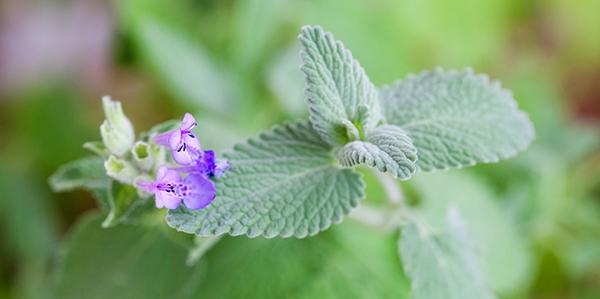
Catnip
Catnip is an ornamental plant that bears a white, pink, or pale purple blossom. It came from the mint family that blooms from the tail-end of spring until autumn. Catnip is an aromatic herb that is notorious for attracting lacewing bees, butterflies – and cats. Exposure to its substance can cause behavioral changes in some cat species. It stimulates their senses resulting in relaxation and extreme playfulness. However, it may also cause some aggression. That is why some cats go as far as acting crazy for a period after exposure.
The catnip is a perennial herbaceous plant from the genus Nepeta. It is a tropical aromatic herb that thrives abundantly in Asia, Europe, North America, and the tropical mountains of Africa. Gardeners usually grow catnip in gardens to ward off aphids and squash bugs. Cat recreational issues aside, they are also a popular ingredient in some herbal teas and essential oils. Catnip is potent herbal medicine for treating cough and gastrointestinal problems. It is also a seasoning in making soups and sauces using either fresh or dried leaves.
Presently, these weedy herbaceous plants are beneficial for use as insect repellants. Cat-friendly gardens often include these plant stimulants in their plots. The relaxation and extreme happiness it can induce to felines ward off their pain and anxiety.
The History Of Catnip
The catnip plant from the mint family has a long way of history. It has been popular not just for felines but also for human use. Today, they are widely popular for cat-loving people since it gives felines a boost of euphoria and energy. Before they became the plant for giving cats the kind of ‘high,’ humans were already using them for the same purpose.
Catnip was endemic in the tropical mountains. The name Nepeta came from the City of Nepeta (now Nepi) in Italy, where the plant first thrived abundantly. Before Chinese teas became popular, catnip was already a tea for the French. The Romans also use the herb for most of their recipes and for treating various ailments. It is a carminative, antispasmodic drug, tonic, and stimulant in ancient medicine.
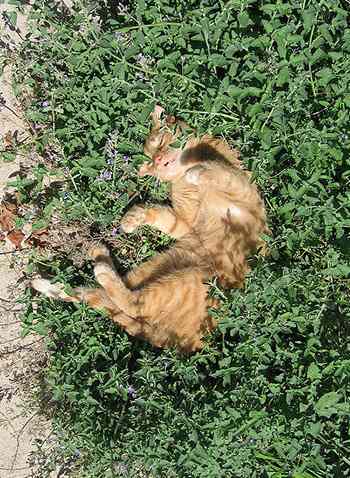
Sometime in the 18th century, the plant arrived in America when some settlers brought some cuttings and propagated them. By then, catnip is a common herb for cooking and medicinal use. They were given to sick people to induce perspiration but without increasing their body heat. Native American women also use it for menstrual pain relief. It also became an effective sedative plant for children.
There is no evidence to support the claim, but accordingly, Egyptians were the first to use catnip on cats. That’s probably because of their adoration for the felines. Although today the plant is not widely used in medicine and food anymore, they are still grown for the benefit of cats. The aromatic weed, however, does not cause the same stimulating effect on humans as it does on the felines.
Where This Plant Is Found
Catnip can thrive everywhere and is almost invasive to have around. They grow on roadsides, fields, or even in disturbed areas. However, they mostly flourish in the tropical mountains. Catnips are considered tropical aromatic herbs that are native to Europe and Asia. They are also cultivated in some parts of North America and Africa.
Some catnip varieties are used as subtle garden borders since they make a fine addition in rows and garden edges.
Related: The Complete Map of Edible Plants: Find Out What You Have in Your Area! (Video)
How to Identify Catnip
There are about 250 varieties of catnip worldwide, each country with their own variety of the plant. Thus, it can get confusing to identify one but, it is mostly their flowers or sizes that differentiate them from the others. Their flowers bloom in a spike-like cluster in showy colors at the branch end of the plant. These perennial herbs are weedy in appearance and spread easily.
One of the distinct characteristics of the catnip is its square stem which is common to the mint family. The catnip’s stem is mostly light green with fine hair covers. Their foliage may also range from green to a gray-green color. A catnip’s leaf appears triangular to ovate with scallop-shaped edges and fine hairs like its stem.

Here are a few easily identifiable varieties of catnip:
- Common Catnip (Nepeta cataria)
The common catnip is the variety that attracts most species of cats because of its distinctive aroma. It has a triangular leaf with scalloped edges covered in tiny hairs. Common catnip has white flowers and can grow up to 3 feet tall.
- Lemon Catnip (Nepeta citriodora)
The lemon catnip may also reach up to 3 feet high. It has a white and purple bloom that looks similar to the common catnip. As the name implies, the lemon variety has a bright and lemony scent. They are the ideal species for teas and garnishes. They are not very popular in cats owing to their distinct lemon smell.
- Greek Catnip (Nepeta parnassica)
It is a smaller variety that can grow only at 1.5 feet. Greek catnips have pale pink flowers and off-green foliage and stems. Sometimes it looks almost white as it is green. These are the types that also make a good ornamental plant.
- Camphor Catnip (Nepeta camphorata)
Although they still belong to the mint family, the camphor catnip exudes a camphor scent more than mint. They also grow as small as the Greek catnip at 1.5 feet. A camphor catnip’s flower is similar to the common catnip, but it grows purple dots at the base of its petals.
Related: The Best Guide to Identify over 400 Wild Plants (Video)
How To Grow Catnips
Catnips are resilient and easy to grow, although, at times, they can become quite invasive. These plants can grow from stem cuttings, division, or seeds. Commercial catnips are mostly from seeds grown in a greenhouse.
The end of fall or early spring is the best season to plant catnips as they need a lot of sunshine to flourish. They will also grow best in well-drained soil. But catnips can still thrive even in partial shade, poor soil condition, or mostly disturbed areas.
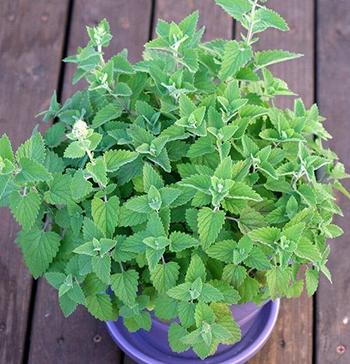 The easiest way of growing catnip is from root division if you have an existing plant. You can dig up the plant, divide its root into sections, and replant it in loam soil.
The easiest way of growing catnip is from root division if you have an existing plant. You can dig up the plant, divide its root into sections, and replant it in loam soil.
If growing it from seeds, you can sow it indoors before the last frost. It will help if you soak them overnight before sowing them. Sow the catnip seeds into the soil and lightly cover them. The germination period usually starts from 14 up to 40 days, depending on the variety. You may then replant the seedlings at about 12 to 18 inches apart to facilitate healthy and lush growth.
When propagating catnip from cuttings, you may use the new growth for it. The leaf-tip cuttings also grow good enough. Keep the pot moist and with lightly filtered sunlight until the plant establishes itself. Some gardeners who want to grow them faster use growth hormones on the tip of the cuttings before planting. They are also nitrogen-feeders, so adding plant nutrient systems rich in nitrogen may be beneficial.
The catnip plants are usually drought-tolerant. However, they will grow at their healthiest best in average water, well-drained soil, and in full sun to part shade.
Related: The 10 Medicinal Seeds You Should Plant for a Complete Backyard Pharmacy (Video)
How To Harvest Catnip
Catnips are commercially propagated primarily for use in cats more than for other purposes. They are the main components in some cat stuff like packed balls and dangling toys. They are also used in compressed pellets and shaker bottles.
It is best to harvest the flowers when they are in full bloom. At this time, their aromatic properties are at their peak. Catnips usually bloom during the mid-summer until fall.
Here are a few other tips in harvesting to get the most out of the plant: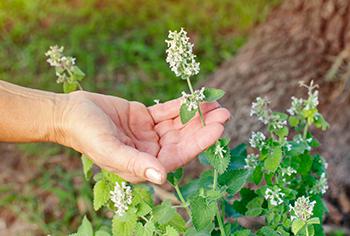
- Harvest the leaves and flowers only later in the day when the dew has evaporated. It will prevent them from getting moldy and from rotting out.
- Cut off the entire stem from the base of the plants. It will enable the plant to re-grow faster than cutting off the leaves or flowers alone. Or you may cut it off a few inches above its crown.
 You may cut the plantings twice during its growing seasons. It is best to harvest them in mid-summer and let them re-grow for harvesting again in fall.
You may cut the plantings twice during its growing seasons. It is best to harvest them in mid-summer and let them re-grow for harvesting again in fall.- Some gardeners harvest the plant using a standard baler for wide plantations. A mower with a sidebar cutter can also be used for a medium-sized yard. For a small garden, you may cut it off with shears or by hand.
- Allow the leaves or flowers to air-dry in a drying screen or tray. Store them in a dry and airtight container away from sunlight and heat. Remember to keep the new harvest away from cats as they may destroy them before they are ready for storing.
What Catnip Is Good For and Natural Remedies Made From It
Catnips are widely used for the recreational benefits of cats. Their love for the plant is said to evolve from catnip’s ability to ward off mosquitoes and other parasites. Eventually, it was found out that the chemical compound nepetalactone provides cats with increased biological responses.
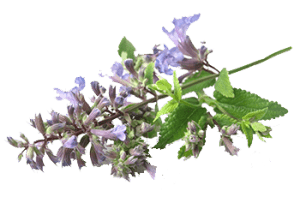 Humans similarly use the plant to generate the same stimulating effect. But this effect varies as it may work in some people but not as much in others.
Humans similarly use the plant to generate the same stimulating effect. But this effect varies as it may work in some people but not as much in others.
Generally, catnip has several medicinal uses in ancient medicine. The essential oil of catnip is beneficial for a variety of gastrointestinal problems like diarrhea and stomach ache. They also relieve respiratory ailments like cough, bronchitis, and asthma. Its antispasmodic property is useful for relieving muscle cramps and menstrual issues. Catnip also has antibacterial, antifungal, and antiseptic properties for treating scabies and wounds.
They are mostly consumed as tea using either fresh or dried leaves. Catnip teas are also excellent for relieving insomnia and anxiety.
What Parts of The Plant are Used for Remedies?
The fresh and dried leaves and flowers of the catnip plant can be steeped as teas and consumed for relieving various illnesses. The fresh leaves are boiled and used as antiseptic for cleaning wounds and scabies.
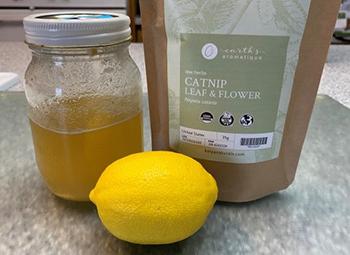
The aerial parts of the plants are harvested for essential oil extraction. These essential oils are utilized for pharmaceutical products or in some dietary supplements.
Catnip Tea Recipe
Ingredients:
- 2 tsp dried catnip leaves or flowers (Nepeta cataria)
- 1 cup water
- Honey or lemon to taste
Steps:
- Mix dried leaves and flowers of catnip in a cup of water and bring to a boil.

- Remove from heat. Let the catnip tea steep for about 10 to 15 minutes.

- Strain the liquid to remove plant particles. Mix in honey or lemon juice according to preference.

How to Use:
Drink the catnip tea to alleviate anxiety, nervousness, and insomnia. It is also the best concoction for the treatment of stomach and respiratory problems. Consume the tea immediately after cooling as they are best when the tea is still warm to the touch.
You may drink catnip tea twice to three times a day. If treating insomnia, it is best to drink this only before bedtime.
Related: Anxiety and Stress Tincture (Nicole Apelian Apothecary)
What Plants Resemble a Catnip?
| Feature | Catnip (Nepeta cataria) | Mint (Mentha spp.) | Lemon Balm (Melissa officinalis) |
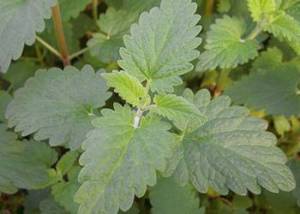 |
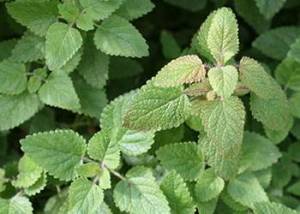 |
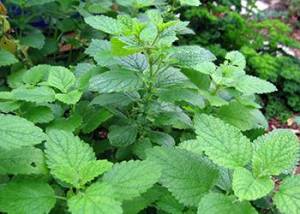 |
|
| Size | Height: 2 to 3 ft Width: 2 to 3 ft | Height: 6 in to 3 ft Width: 3 ft | Height: up to 3 ft Width: 12-24 in |
| Leaves | Triangular leaf with scalloped edges covered in tiny hairs | Dark-green matte-surfaced, paired opposite | Heart-shaped leaves, scalloped edges, rough and veined with fine hairs |
| Flowers | Small white flowers with violet spots | Whorls of white or purple slightly bigger than catnip | Small white or pale pink flowers that bloom in the leaf axils |
| Stem | Spreading clump of erect branched stems | Has short square-shape stems | Joint branching stems |
| Scent | Lemony scent | Minty aromatic | Distinct lime scent |
Warnings and Cautions
Although they are around for quite a while as traditional medicine, there is not enough evidence to prove the effectiveness of catnip. It may help relieve bouts of insomnia but may cause extreme sluggishness and drowsiness if used at the start of the day.
Catnip is not advisable for use in pregnant women as it may cause uterine contractions. It is also a diuretic that can induce urination and heavy perspiration. If your symptoms do not improve after a few uses, it is best to discontinue using catnip and consult your doctor.
When using this plant with cats, you can expect aggression as a side effect. The duration of their euphoric effect may vary depending on the species of the feline. Not all cats are attracted to the compounds that the catnip contains. Cats exposed to the catnip may experience its effect for at least 10 minutes.
Before using catnip as a supplement for you or your cat, it is imperative to check with your physician and your cat’s vet.
You may also like:
30 Anti-Anxiety Remedies You Didn’t Know About
How to Recognize a Heart Attack and What to Do Next (Video)

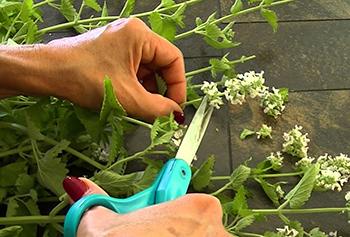 You may cut the plantings twice during its growing seasons. It is best to harvest them in mid-summer and let them re-grow for harvesting again in fall.
You may cut the plantings twice during its growing seasons. It is best to harvest them in mid-summer and let them re-grow for harvesting again in fall.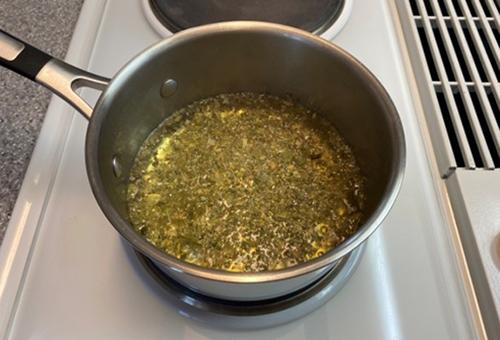
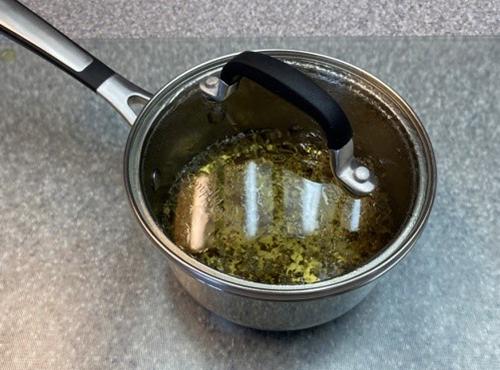
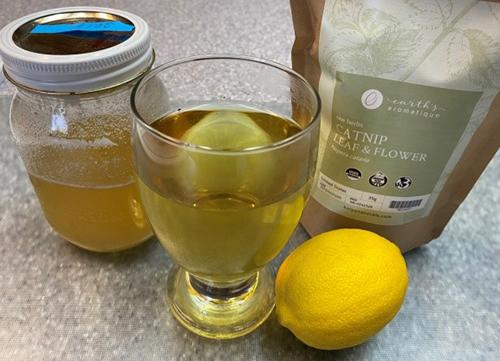

How much would you use of FRESH catnip? Or is fresh not recommended? Thanks.
Hi Jeremiah,
Yes, you can use fresh catnip as well. It will be the same amount as dried catnip.
Be aware that the leaves are generally safe to eat but strong in flavor. Large amounts may induce vomiting.
Many blessings and good health!
I know this might be weird, but I’ve tried smoking catnip and it’s definitely a relaxing feeling!